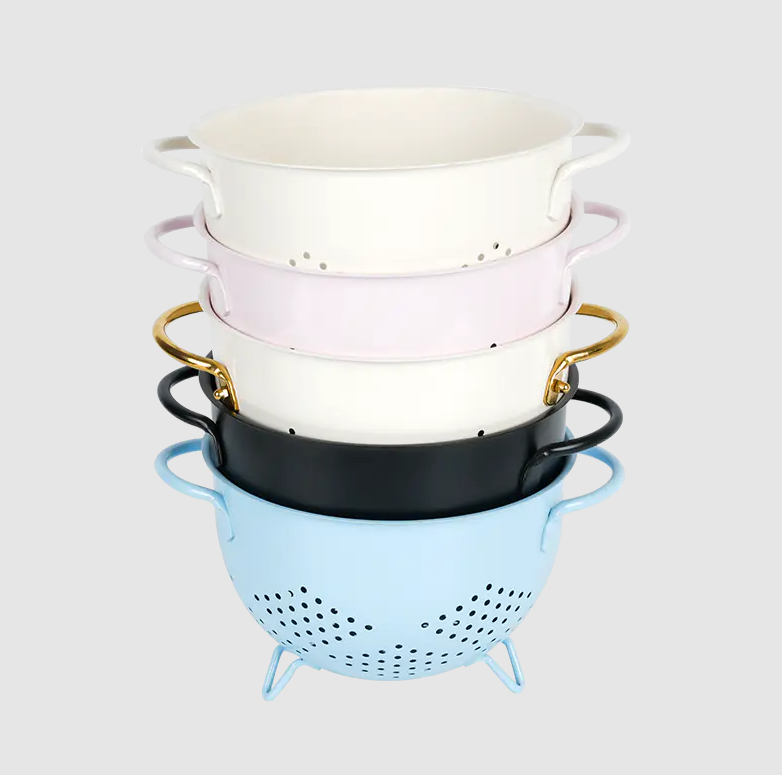When selecting kitchen tools, compatibility with existing cookware and fixtures is often overlooked. For a product like a colander pasta strainer, which interacts directly with pots, pans, and sinks during use, shape and design compatibility can make a significant difference in user experience. This article explores how well such strainers adapt to various kitchen shapes and whether one model fits all.
Pot and Pan Compatibility
Pots and pans come in different diameters, depths, and rim styles. A fixed-size colander may not always sit securely on the edges of a small saucepan or a large stockpot. This is where design innovation becomes crucial.
Some strainers are designed with adjustable arms or extendable handles that allow them to sit atop pots of varying widths. These models provide a versatile solution for households with multiple types of cookware. In contrast, traditional bowl-shaped colanders with fixed dimensions may rest awkwardly inside a pot or tip over when draining heavier pasta, especially from deeper or unusually wide cookware.
Sink Shape and Depth Considerations
Sinks are just as varied as cookware. Single-basin, double-basin, farmhouse, and under-mount sinks all have different dimensions and depths. A colander that is too deep may submerge in water when used in a shallow sink, while a wide one may not rest evenly in a narrow basin.
To address this, over-the-sink colanders have become popular. These designs typically feature expandable arms that can bridge across the sink opening, keeping the strainer elevated above the bottom surface. This not only fits a wider range of sink shapes but also promotes better hygiene by preventing contact with dirty water.
Design Flexibility and Material Advantages
Silicone and mesh models tend to be more flexible and adaptive to different surfaces. Silicone can bend and fit snugly into round or oval sinks, while metal mesh colanders can offer more drainage points and a lighter structure for balancing across pot rims.
Some compact strainers, like clip-on or snap-on models, attach directly to the rim of the pot without requiring a separate container. These are ideal for small kitchens or when dealing with oddly shaped pots where a traditional colander would be unstable.
User Needs and Kitchen Layout
Ultimately, the best type of strainer depends on how it will be used. A home cook with a single, deep farmhouse sink may prefer a long over-the-sink model, while someone cooking in a compact apartment might benefit from a collapsible or clip-on design. Assessing kitchen dimensions, sink depth, and the most commonly used pots will help guide the most compatible choice.
Conclusion
Not every colander pasta strainer is universally suitable for all cookware and sinks. While traditional bowl-shaped designs may suffice in standard settings, modern kitchens with diverse layouts often require more adaptable options. Choosing a model with adjustable features, flexible materials, or versatile attachments ensures better usability, stability, and efficiency across different cooking environments.
Product Description:
Size
K03-1: 16*10cm/23*12cm/28*14cm
